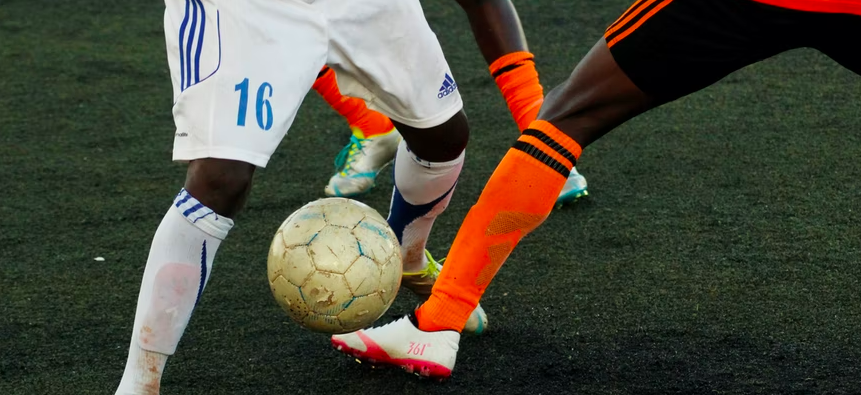Football is one of the most popular games in the world. Many people enjoy watching matches regularly, and some take their passion for the game further and become players themselves.
Football is no easy thing. To master the game, you have to train extensively over a long period of time, as well as gain the necessary experience by participating in games. Playing the game can be exciting and exhilarating, however it’s also important to prioritize safety.
As with any sport, athletes are exposed to several possible injuries when on the field. They can range in severity, and while, for the most part the players know how to avoid them, in some instances they are inevitable. Sometimes, injuries can also be the result of chronic stress placed on the muscles and joints.
If you or someone close to you plays football, you should be aware of some of the most common injuries that usually occur in the context of the sport. This way you stand a better chance of preventing them and of identifying and treating them promptly in the event it happens.

Ankle injuries
Sprains are one of the most common injuries occurring in any sport, and it is certainly not an unknown problem to football players. Although it may not sound like much, sprains are actually incredibly painful and can leave you immobilized for an extended period of time. The symptoms are usually quite dramatic and generally occur shortly after you’ve twisted your ankle.
Sprains present with sudden-onset pain, bruising, often extensive swelling, and the inability to hold your weight on the damaged joint. This type of injury typically occurs due to an uneven pitch, or twisting your ankle while running. Ankle twists also happen if you fall and injure yourself.
If you’ve been the victim of a slip and fall accident that was due to someone else’s negligence, you are within your rights to hire a personal injury lawyer that can help you. The amount of compensation you are eligible to receive depends on the extent of the wounds you sustained.
In the case of a sprain that resolves completely with no lasting damage, you’ll receive a smaller sum than if you had a complicated fall and suffered additional wounds, such as to your head or ribs. Regardless of how severe your problem, you should seek legal counsel in order to get the justice you receive. If you get in contact with a specialist, you’ll be able to get a clear, realistic picture of what you can expect when you start a legal claim.
Knee injuries
Generally speaking, knee wounds are more serious as well as more difficult to treat than ankle injuries. The knee is a complex joint, made up of several different components, making it more susceptible to injury. The severity of the injury also tends to depend on the part of your knee that was injured. For example, a torn meniscus is one of the most well-known injuries.
The symptoms generally include swelling, stiffness, difficulty straightening the knee, as well as a constant popping sensation. In some instances, bed rest, medication and ice are all that’s needed and the injury heals on its own. In other instances, however, surgery, followed by rehabilitation and physiotherapy, is necessary to regain full mobility. You may also experience a dislocation, which is what happens when the bones shift out of their designated place.
The patella, the bone that is most often injured in knee fractures, can move either partially or entirely. Numbness, tingling, swelling and pain usually accompany this type of injury, but it is usually not a complicated issue and can be solved easily.
The affected joint will feel sore and inflamed for a while afterwards, so it’s important to take your prescribed medication and get all the necessary rest. In some rare instances, however, the patient doesn’t respond to traditional treatment.
Manipulation doesn’t manage to set the bones back in place, and there may also be accompanying blood vessel or nerve damage. The dislocation itself can cause damage to surrounding structures, like muscles and ligaments which will also necessitate repairs. In the case of complex injuries like that, the only viable solution is to undergo surgery.
Hand and wrist injuries
You probably wouldn’t expect this type of injury to occur in football. After all, the athletes use their feet to kick the ball on the pitch. Therefore, the hands should be safe. That is not always the case, and believing this can lead to being careless about your safety.
Hand injuries can occur if you collide with another player, or wound yourself during a fall. Just like in the case of other injuries, your wrists and fingers are vulnerable to sprains and fractures. The bones and ligaments here are usually more delicate than those in the legs, meaning that it’s easier to come down with something serious.
The treatment scheme depends on the type of injury you sustained. In the case of dislocations or fractures you first need to reduce the swelling by applying ice, and try to keep the affected area elevated above the heart to avoid fluid pooling in the tissue.
If you’ve experienced lacerations, you must apply direct pressure until the bleeding subsides, and keep the area clean. Your medical practitioner will prescribe a course of antibiotics, and you may also need sutures, depending on the nature of the cut. Regardless of the type of injury, you must contact a doctor as soon as possible. This is particularly important in the case of an injury that appears quite serious such as fractures in which the bone protrudes through the skin, or if you notice any signs of infection such as redness or fever.
Although most injuries are minor, others can be a matter of life and death, so it’s important to not delay checking in your doctor’s office. When it comes to football injuries, the best thing to do is try and prevent them as much as possible. Make sure you train to increase your flexibility, strength and endurance in order to bypass some of the hazards.
Nevertheless, if an injury does occur, it’s important to get the help you need as soon as possible, so you can get back on the pitch in no time.



Recommended Comments
There are no comments to display.